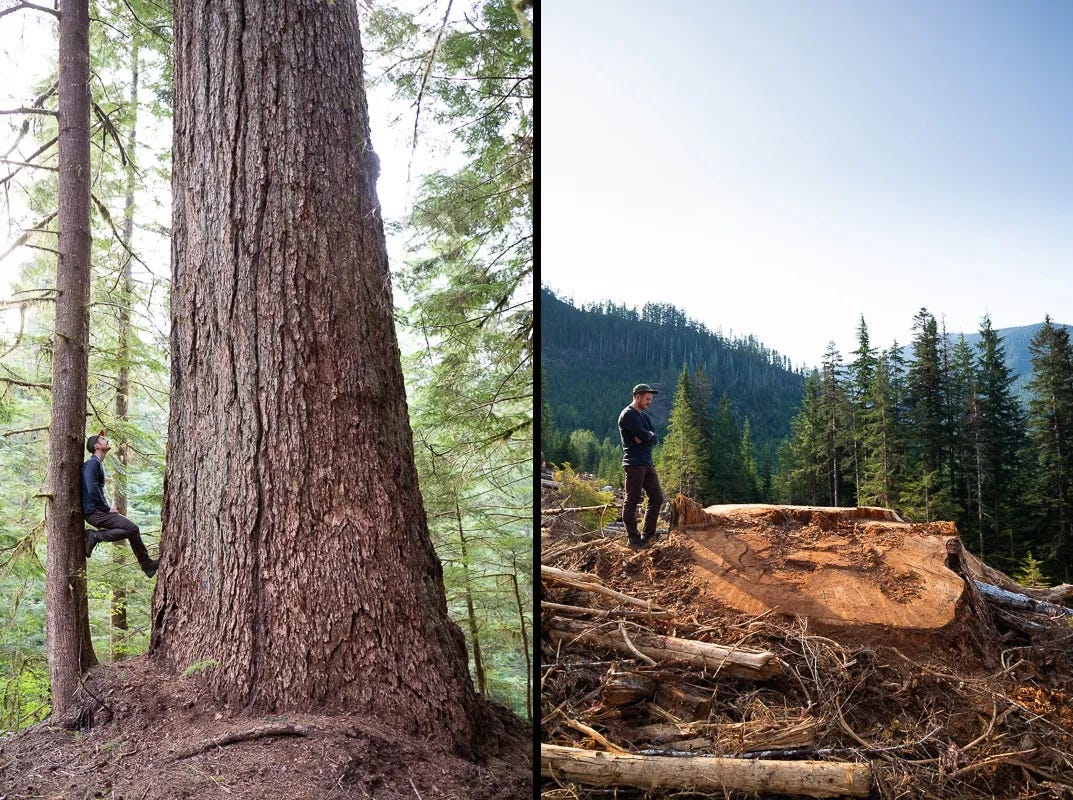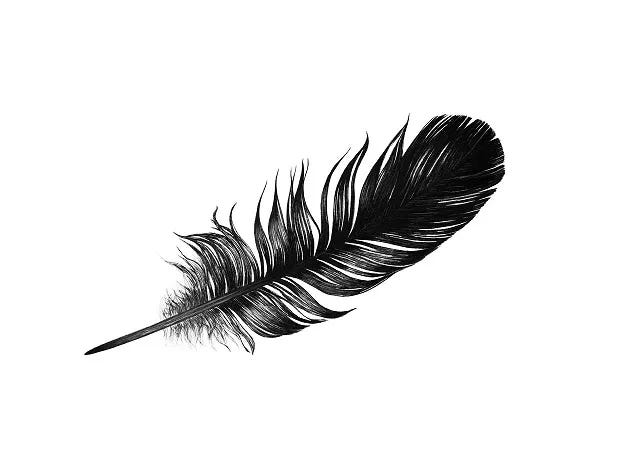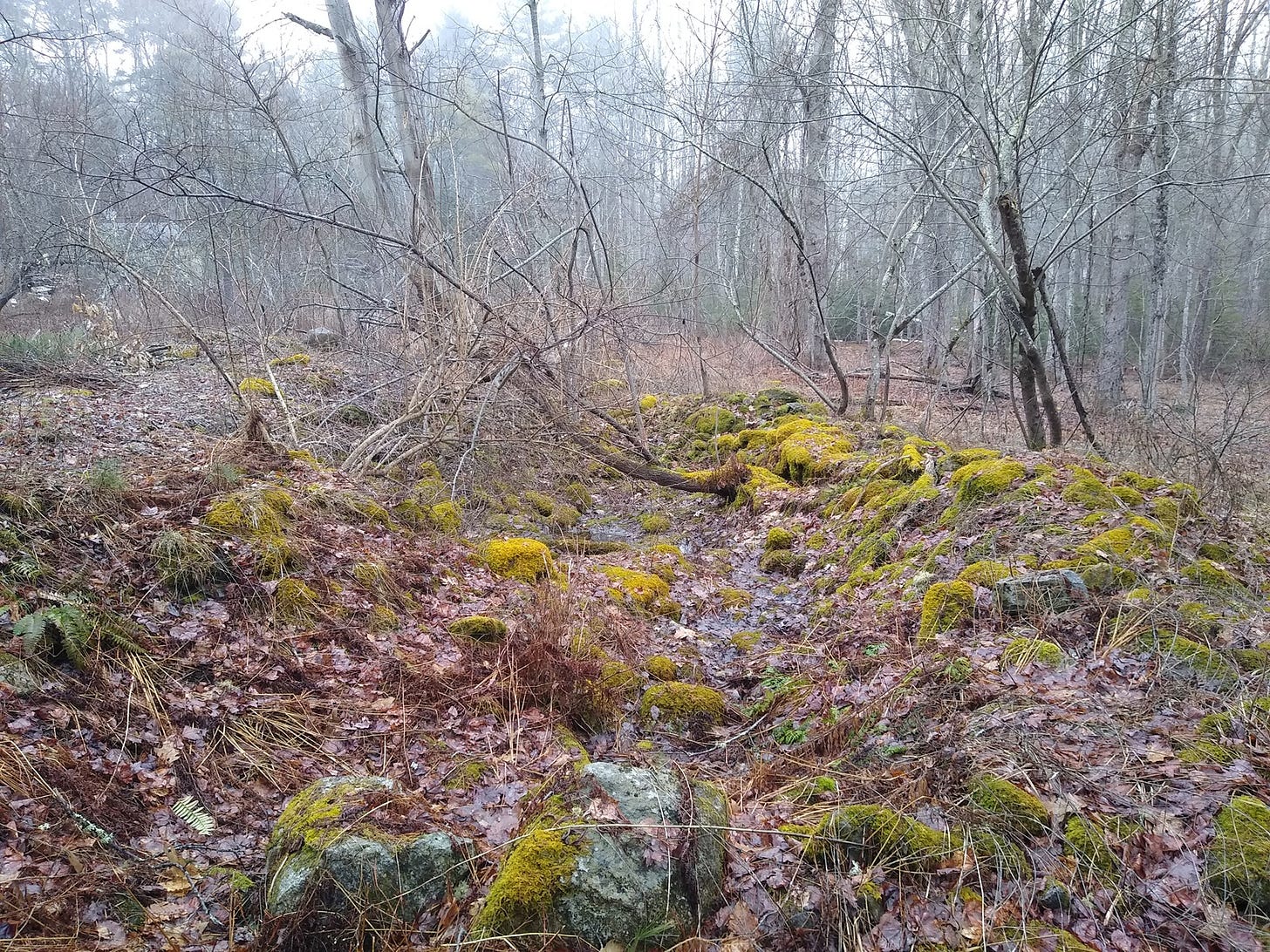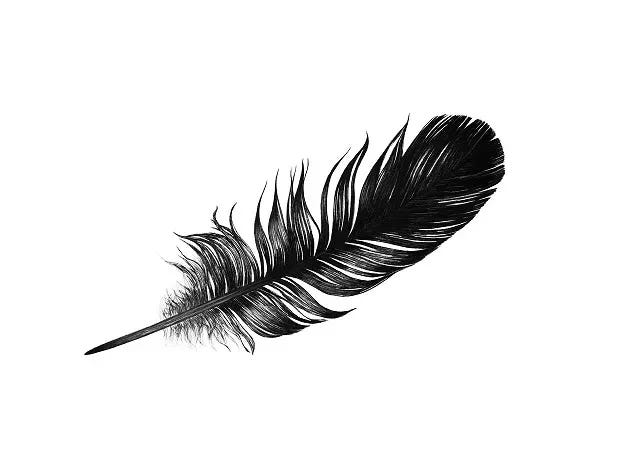
Hello everyone:
Heather and I are away this week. Please enjoy this revised older essay on species loneliness.
As always, please remember to scroll past the end of the essay to read some curated Anthropocene news.
Now on to this week’s writing:
This week I’m ruminating on the term “species loneliness.” While not commonly used, it has a noble history, mentioned for example by both Robin Wall Kimmerer in Braiding Sweetgrass and Robert Macfarlane in Underland. The phrase originated in a 1993 paper in Environmental Ethics by scholar Michael Vincent McGinnis, who articulated it for ordinary folks in a 2012 Santa Barbara Independent article. There, he wrote about how the loss of California ecosystems was also a loss of residents’ deep and nuanced relationships with the land and sea. Species loneliness, he wrote, is a response to those losses:
Precisely at the moment when we have overcome the earth and become unearthly in our modes of dwelling, we need to restore our kinship with the animate world. We suffer these days from a new form of collective anxiety: species loneliness. We are disabled creatures dislocated in a wounded landscape. Species loneliness in a wounded landscape moves us to want to restore our relationship with place and others…
Dislocated in a wounded landscape: There are two layers of sadness in that phrase for me, both of which I feel when I remember what it’s like to walk through a clear-cut. First, there’s the emotional response to the destruction of vast swathes and multiple generations of the community of life, and then there’s the emotional grit of our complicity.
I’m curious what comes to mind for each of you when you hear “species loneliness.” Its intent, as I understand it, runs deeper than my example of an individual in a clearcut. It seeks to name a social phenomena rather than an individual emotion, one rooted in what it means to be human in an disrupted world.
Macfarlane defined it (on Twitter) as “the sense of isolation and sadness arising from human estrangement from and extinction of other species.” Kimmerer described it as “a deep, unnamed sadness stemming from estrangement from the rest of Creation, from the loss of relationship.” Richard Louv, author of Last Child in the Woods and Our Wild Calling, called it “the gnawing fear that we are alone in the universe, with a desperate hunger for connection with other life.” And McGinnis, as you read above, referred to it as a “collective anxiety” suffered by “disabled creatures.” He means us.
So, to merge these definitions: Species loneliness is a sadness, a fear, a disability, an anxiety, an estrangement, and an awareness of our estrangement. That awareness makes it a cognitive condition to some degree – a melancholy emanating out of the knowledge of what we’ve done – but largely, I think, species loneliness exists as a whole body response to the biologically impoverished world we’re creating.
Too few of us spend unclocked hours outside, and it shows, both in our health and the health of what’s left of the living world. How many people have a forest, field, beach, or pond that they love enough to repeatedly visit and notice how the fabric of life changes through the year? Not enough of us know the names or qualities of the plants in our yard or neighborhood, and even fewer are passing that information on to the next generation.
Worse, most of us who live boxed-in urban or suburban lives away from the real world are unsure that life on Earth will welcome us when we do venture out. Nature becomes the scary neighborhood.
I wonder if we need to know much of the litany of loss to feel the grief. Or do our ancient relationships with plant and animal exist deep enough in our bones and genes that the grief can infect even the most oblivious of us? I think Macfarlane, Kimmerer, and Louv would all vote for the latter. Louv explains:
“All of us are meant to live in a larger community, an extended family of other species… An individual or family cut off from positive social contacts with other people is more vulnerable to alcoholism, depression, bullying, and abuse and is more easily controlled. Cult leaders understand this too well. Likewise, our species’ vulnerability to all manner of pathologies grows with our distancing from other species. Without contact with other-than-human kith and kin, the family of humans loses comfort, companionship, and perhaps even the sense of a higher power, however one defines it.”
I’m tempted to call species loneliness an evolutionary emotion, as ingrained as awe. Humanity’s self-involved inward spiral of the last few centuries bears little resemblance to our previous million years’ coexistence with animals and plants. The memory of that coexistence is masked by our ecological amnesia, but it’s still there. We’ve forgotten what life is and how it works because we’ve been living alone for too long, but we sense its absence.
When I say evolutionary emotion I also mean a physical reality that we feel. There are a plethora of studies that show that connecting with nature – even if just walking under trees in a park – reduces anxiety and stress and increases our sense of well-being. This is particularly important for kids, both for their health in the short-term and their self-reliance in the long-term. Children living in abstraction from the Earth grow up to increase the abstraction. It happened to our grandparents, to our parents, and to us, and it’s happening to today’s kids. Each step forward is a step away.
Almost two centuries ago, Ralph Waldo Emerson wrote with his usual mix of concision and mysticism, in his essay “Nature,” about the necessity of walks into nature:
The greatest delight which the fields and woods minister, is the suggestion of an occult relation between man and vegetable. I am not alone and unacknowledged. They nod to me, and I to them.
Whatever you might think of Emerson and his relevance to your life, his sentence I am not alone and unacknowledged should be written in stone somewhere in your sense of self. It as true as the Earth and as vital as the Sun.
The “occult” (mystical) relation to the living world, that intuitive connection that still lives somewhere inside us, however silly it may seem here in the image of a Harvard man in starched collar nodding to a Black-eyed Susan, is essential. Of course Emerson wasn’t distracted by notifications on his smartphone, nor, as a wealthy white man in a stratified world, was he attuned to the difficulty of making such relations while living in slaves’ quarters or 19th century slums. But then as now we’re all somewhere on the spectrum between species loneliness and occult relations with other life.
We live in our boxes, but we’re always able to step out and reconnect.
Emerson’s nodding at plants reminds me of Barry Lopez, in “Apologia,” making small embarrassed bows at the bloodied roadkill he stopped to remove from the highways and set into prairie grass in a brief impromptu funeral rite. What he was doing for them he was also doing for himself: acknowledging relationship and making meaning of the loss. Which is what we all need to be doing now, each in our own way, to reduce our isolation.
How did we start down this road toward species loneliness? Like you, I have some thoughts - private ownership and the theft of the commons, habitat erasures by large-scale agriculture, the abstractions of non-animist religions, an obsession with tool-making, etc. - but I don’t really know, other than that it’s part of the story beneath the story of this strange and turbulent civilization.
However it happened, we shifted from belonging to the world to assuming the world belongs to us. We’re left now to cope with an actual aloneness created from centuries of an imagined aloneness, that childlike fiction we’ve all grown up on that pretends we are superior to other forms of life. What makes us special makes us better, we’re led to believe, as if we’re somehow above and beyond the relationships which bind all life together.
The good news is that science reminds us on a daily basis that the mystics were right all along: We’re not separate or alone. We’re neither alone nor unacknowledged. We’re woven into the fabric and dependent upon it, even as we eat away at it like eight billion moths in a closet.
All of the human-centered ideas of separation have fallen like scales from our eyes. Our consciousness is at least as dependent upon our microbiome as it is upon our senses. Tool-making, puzzle-solving, complex language, and even story-telling can all be found in other species, many of which do not resemble us at all. I think it’s fair to say that our intelligence is distinct from others primarily because of its potential for destruction.
Our fate and future are those of other animals and plants, all of us subject to the laws of ecology. Not only are we not superior, but “Superiority is not an inherent reality of the natural world,” as Lacy M. Johnson explains in her wonderful essay “What Slime Knows.” Symbiosis and inter-species relationships may be more central to natural selection than the Darwinian idea of species.
Ironically, our planet-altering actions rooted in our ideas of separateness have only proved the opposite: As species disappear and the climate shifts and civilization destabilizes, we are forced to acknowledge the relationships that bind our fate to that of others. In the meantime, though, the impacts of our bad ideas are global, ubiquitous, and growing.
Kimmerer writes that “We have built this isolation with our fear, with our arrogance, and with our homes brightly lit against the night,” and I know she’s right, but I feel another human trait at work here beside fear and arrogance: complacency. We are deeply and weirdly comfortable – loneliness notwithstanding – living in these abstract spaces. Not just the comfy, brightly lit ones amidst our fear of darkness, but also the treeless city streets, fluorescent office cubicles, space stations, and online meet-ups.
Our astonishingly rapid acceptance of a life staring at screens, and now bringing those screens with us everywhere, speaks volumes about our cognitive rootlessness, even as our souls and bodies protest. Some of us are so estranged that we imagine a life on Mars as the next logical step for culture, though that’s as irrational as it is unlikely. Earth is merely a scorched launch pad for such impoverished dreams. As for the blue-green reality of our home world, a screen saver with gorgeous nature porn seems to be enough of a proxy, along with a World Wildlife Fund calendar on the fridge, Sir David Attenborough in the Netflix queue, a dog on the couch, and an aloe plant on the windowsill.
Meanwhile, we’re surrounded by what may be the most fascinating life forms in the galaxy. Why not be a friend to slime molds, for example, whose many wonders include creating filaments that so closely resemble those that connect galaxies across the universe that astronomers have used them as clues in their search for dark matter.

Despite all the loss, despite our bulldozing so much life toward impoverishment or extinction, we are still not alone. Relationships are as available as the nearest tree, bird, park, forest, beach, and hill. Flowers and birds are there to be nodded to, and to be watched closely as they nod back.
Pets are even more available. Richard Louv writes that we are “self-medicating with animals,” and that in the U.S. growth in pet ownership has outstripped total household growth. But as much as I love dogs and cats and value those relationships, I think pets are better symbols of our transformative powers than mirrors of the natural world.
Pets, photographs, and houseplants are not enough, and on some level we know it. Life in the Anthropocene is not enough because our individual health and societal health depend entirely on a healthy planet. It’s not enough because our evolution dictates that we live in a vibrant community rather than an industrial food chain. It’s not enough because we feel – we know – that it’s not enough. “Human beings,” McGinnis writes, “remain isolated actors in an earthly cage.”
So what do we do? We de-escalate our destruction, we reprioritize the meaning of our lives to include nonhuman souls and minds, we accelerate our declining birth rates in order to make room for other species, we replant forests and grasslands, we rebuild wetlands and reefs, we cite the science, we make art that incentivizes all of the above, and we get ourselves and others outside to pick up the threads of the tapestry that still embrace us.
Louv notes that some physicians, especially pediatricians and psychologists, are writing “nature prescriptions” for their patients. We need to learn the names of our nonhuman neighbors and, as Kimmerer suggests, we need to get in the habit of calling out to them in meaningful ways. We need to give voice to the world we inhabit.
As things get tougher - and they will - we will need an optimism of the will even as we harbor a realistic pessimism of the intellect. We’ll need to tell new stories that are really new versions of our most ancient stories: We are not alone or unacknowledged. We belong, we’re home, we have work to do.
I’m not sure what this week’s ruminating on species loneliness accomplishes in terms of reducing it. But it’s what I have to offer. I’m grateful to the writer Amitav Ghosh, who explains that rather than being irrelevant, artists are central to rewriting civilization:
“This is the great burden that now rests upon writers, artists, filmmakers, and everyone else who is involved in the telling of stories: to us falls the task of imaginatively restoring agency and voice to nonhumans. As with all the most important artistic endeavors in human history, this is a task at once aesthetic and political—and because of the magnitude of the crisis that besets the planet, it is now freighted with the most pressing moral urgency.”
There are many, many ways to justify urgency in these times, but let me add another: Other species are likely experiencing their own loneliness in the midst of our disruptions.
In facing up to all of this, we must remember that we are neither alone nor unacknowledged. Case in point: As my mother and I sat outside talking recently, she raised her finger to make a point and a Mourning Cloak butterfly landed on it.

Thanks for sticking with me.
In other Anthropocene news:
Because we’re away, my picks this week are a week or so old, but they all provide the kind of information and stories we need to hear all the time. They are, to paraphrase the poet Ezra Pound, “news that stays news.”
From
, “Guns and Butterflies,” an account of the tenuous existence of the Regal Fritillary butterfly in a world that prioritizes death over life.From
and The Weekly Anthropocene, another deeply researched and hopeful installment of good news from around the globe. As always, Sam offers up details on vital work being done for biodiversity and clean energy/climate. Here’s his enthusiastic subtitle for this week’s collection:Gavi, The Ocean Cleanup, Roman concrete, mass solar irrigation, Thai tigers, IKEA home power plants in Germany, Paltas lagoons, AI beehives, California YIMBY wins, Sceye super-balloons, and more!
Likewise,
and Earth Hope offer a similar set of good news stories, especially on the biodiversity front. Here’s her title for the most recent newsletter of upbeat news:Hopeful headlines: Vultures rebound, coyotes pair up, echidnas reappear, hens multiply, and badgers will soon cross the road!
But if you want to go deeper on biodiversity news, no one provides more than
at his Global Nature Beat. The extent of his offerings is astonishing, really, from new research papers to recent articles, and from UN conferences to national wildlife politics, and so much more. Please take a look and support his excellent work. Also, Mike has another Substack called , which he describes this way:It is devoted to stories about the world’s most fascinating plants — the strangler figs and their kin, which have shaped our world and our species in profound ways. If that sounds interesting, please subscribe — or check out the introductory post for a quick tour of what makes fig trees so important and what kinds of stories I will be sharing.
From
and the Outlaw Ocean Project, “The Shrimp Factory Whistleblower,” an article and podcast about an American who moved to India to manage a large shrimp processing plant but found horrifying conditions for (mostly female) workers, adulterated food, false paperwork, and much more. The manager secretly gathered information for U.S. authorities and the Outlaw Ocean Project.






I can’t help but think that speaking of species Loss in this context is still putting the human at the centre of the universe. When I think species loss I feel for the trees and plants transported to be lonely examples in a park without their families , The animal sin our zoos, there for humans to gawk at, the pets we have locked in our homes who would be happier in their packs and forests , the animals and fish we eat who we have enslaved in protein factories without dignified lives. ( I still eat meat but try to find ethically sources meat and fish where I can )
And as an adopted person , who has also lost my only child to forced adoption , I’ve lost my tribe, my pack, putting me with other humans does not make up for that loss of family , but my dna remembers the forrest and seascapes of my genetic home and feels content there, unlike the lands I was brought to.
When you hear the phase “take a hike” is your immediate (gut) response positive negative or neutral. If your initial gut reaction is positive or neutral you are, in my opinion, on the right path.